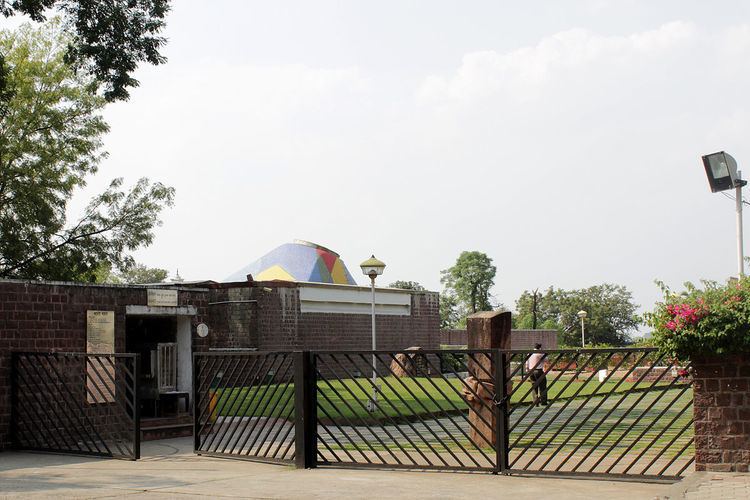Legal status Foundation Construction started 1980 | Main organ Bharat Bhavan Trust Founded 13 February 1982 | |
 | ||
Formation February 13, 1982 (1982-02-13) Purpose Visual arts, performing arts, folk art, literature Website bharatbhawan.org/index.html Address Professors Colony, Bhopal, Madhya Pradesh 462003 Similar Taj‑ul‑Masajid, Lower Lake - Bhopal, Van Vihar National Park, Indira Gandhi Rashtriya, Gohar Mahal | ||
Inuguration at bharat bhavan mp4
Bharat Bhavan is an autonomous multi-arts complex and museum in Bhopal, India, established and funded by the Government of Madhya Pradesh. Opened in 1982, facing the Upper Lake, Bhopal, it houses an art gallery, a fine art workshop, an open-air amphitheatre, a studio theatre, an auditorium, a museum tribal and folk art, libraries of Indian poetry, classical music as well as folk music.
Contents
Bharat bhavan bhopal
History
The early 1980s, saw a burgeoning Indian arts scene and a renewed government focus on developing arts across the nation, through regional centres for arts in state capital cities. The initiative in Madhya Pradesh was taken by cultural administrator, Ashok Vajpeyi, an IAS-officer in state Ministry of Education (1966-1992), who was behind the setting up of literary organization, 'Kalidas Akademi' in Ujjain, which opened in 1983. Though some cultural initiatives lost steam in later years in many parts of India, one such project became a success, Bharat Bhavan (India House) in Bhopal.
f India|Prime Minister]], Indira Gandhi. It was established and funded by the Department of Culture, Government of Madhya Pradesh, though it is run by an autonomous a 12-member Bharat Bhavan Trust. In the following decade, the institution grew to become an important cultural institution of India as it started attracting artists, scholars and students from Indore, Jabalpur, Mumbai, Kolkata and even foreign visitors.
During its formative years, theatre personality, B. V. Karanth who headed the 'Rangamandal repertory', incorporated folk forms of the region into his work, staged many productions in Hindi, especially during his stint at Bharat Bhavan. The "Bharat Bhavan Biennial of Contemporary Indian Art" started in 1986, followed by "Bharat Bhavan International Print Biennial" in 1989. The complex is most known for its art museum, Roopankar, which houses a permanent collection of tribal art, collected by J. Swaminathan in its early years, and represents the best examples of tribal art in India.
The 'Vagarth' centre of Hindi poetry and literature houses a library and archive of Indian poetry, classical music, and folk music. It organizes, 'Katha Prasang' festival on Hindi literature.
Overview
The complex includes an art gallery of Indian painting and sculpture, a fine art workshop, an open-air amphitheatre (Bahirang), a studio theatre (Abhirang), an auditorium (Antarang), a museum tribal and folk art, libraries of Indian poetry, classical music as well as folk music. Besides this, Bhavan hosts artists and writers under its artist-in-residence program at the "Ashram". Over the years, it has become a popular tourist attraction.
Some of the wings include:
